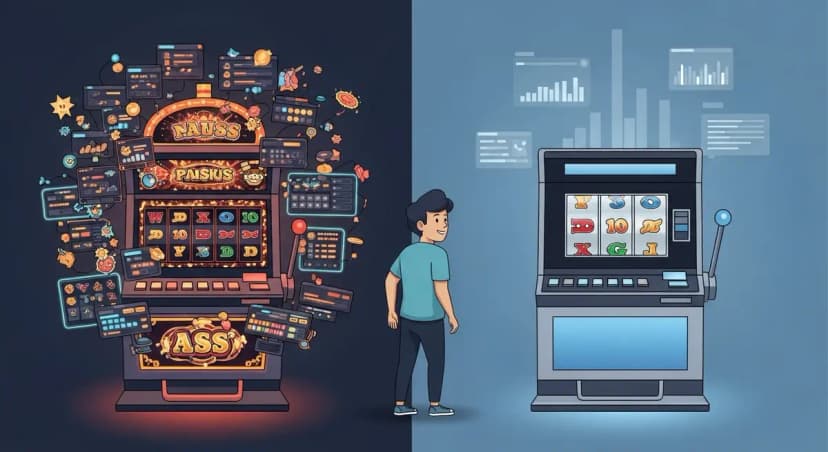Blackjack Hands: Best, Worst and What to Do

Blackjack is a top card game you'll find in online casinos across Ghana and the world. The aim is simple: beat the dealer by getting a hand total of 21, or as close to it as possible, without going over. Knowing which hands to play is key to winning big. This guide breaks down the best and worst blackjack hands, covering strategies, probabilities, and handy charts to help you make winning moves at the virtual tables.
Understanding Your Blackjack Hands
In blackjack, your hand is made up of two or more cards, each with a point value. Aces are flexible, worth either 1 or 11 points. Kings, Queens, and Jacks all count as 10 points, while number cards are worth their face value. The ultimate hand is a "natural blackjack" – an Ace paired with a 10-point card, hitting exactly 21. This is the dream hand!
The sheer number of possible blackjack hands can change depending on the number of decks used in the game. For instance, a single-deck game offers 1,326 possible two-card hands. With multi-deck games, like those often found in Ghanaian online casinos using six decks, the number of combinations rockets to over 4 million!
What Are the Best Blackjack Hands?
The best hands in blackjack are those that significantly increase your odds of reaching 21 or getting very close. As mentioned, the "natural blackjack" (Ace and a 10-value card) is unbeatable and typically pays out at 3:2 odds. Good show!
Other strong starting hands include pairs of Aces or Eights. These are excellent candidates for splitting into two separate hands, doubling your chances of a strong total. A "soft 18" (an Ace and a Seven) is also a favourable hand, offering flexibility to hit for another card without the immediate risk of busting.
And the Worst? Identifying Blackjack Busts
Conversely, the worst blackjack hands are those that put you in a risky position to "bust" – that is, going over 21. The most notorious culprit is a "hard 16" (e.g., a Ten and a Six). Hitting this hand presents a very high chance of busting, so proceed with extreme caution, or better yet, stand if the dealer's upcard suggests they might bust.
Other weak blackjack hands include a hard 12 or 13, which should be hit if the dealer's upcard is 7 or higher. A hard 15 or 16 should also be hit if the dealer's upcard is a 7 or higher.
What Percentage of Hands do you win in Blackjack?
The percentage of hands a player can win in blackjack depends on various factors, including the player's skill level, the casino's rules, and the number of decks used. On average, a skilled player can win around 48-49% of hands played.
Blackjack Hand Strategies
The best blackjack strategy to win at online casinos involves following a set of rules that players can use to make strategic decisions during the game. The basic blackjack strategy can help players maximize their chances of winning by advising them when to hit, stand, double down, or split based on their hand and the dealer's up card.
Hard hands
For hard hands, players should hit if their hand value is 8 or less, while they should double down if their hand value is 9-11, depending on the dealer's up card. If their hand value is 12-16, players should hit if the dealer's up card is 7 or higher; otherwise, they should stand. If their hand value is 17 or higher, players should always stand.
Soft hands
For soft hands, players should double down if their hand value is Ace-2 through Ace-7, depending on the dealer's up card. If their hand value is Ace-8 or Ace-9, players should always stand.
Pairs
For pairs, players should always split Aces and 8s, while never splitting 5s and 10s. Other pairs should be split based on the dealer's up card, with certain pairs being split only if the dealer's up card is within a specific range.
Surrender
Finally, players may surrender their hand in certain situations, forfeiting half of their bet but ending the hand. Surrender is advised in certain scenarios, such as when the player's hand value is 15-17 and the dealer's up card is high.
Multiple Hands in Blackjack
Online casinos offer players the opportunity to play multiple hands of blackjack simultaneously, increasing the number of hands played per hour. Players should be cautious when playing multiple hands, as it can increase their chances of losing. It is recommended that players stick to playing one or two hands at a time to maximize their chances of winning.
Conclusion about Blackjack Hands
Knowing the best and worst blackjack hands and when to hit, stand, split, or double down is essential for any player looking to increase their chances of winning. While luck plays a significant role in the game of blackjack, implementing the strategies outlined in this article can help players make more informed decisions at the tables.
Remember that playing blackjack, like any form of gambling, carries a risk, and players should never bet more than they can afford to lose. Online casinos provide players with a safe and convenient way to play blackjack, but it is essential to choose a good online casino with fair rules and regulations. Following the strategies outlined in this article and playing responsibly, players will be able to enjoy the excitement and thrill of blackjack while minimizing their losses.
FAQ
What is a blackjack hand?
A blackjack hand is made up of two or more cards dealt by the dealer, with each card having a specific point value. The main goal of the game is to beat the dealer by having a hand that totals 21, or is closer to 21 than the dealer's hand, without going over 21.
What does "soft" mean in blackjack?
In blackjack, a "soft" hand is one that includes an Ace. An Ace can be counted as either 1 or 11 points, depending on what best suits the player's hand. For instance, an Ace and a six can be considered a soft 17 or a hard 7, based on the player's strategic choice.
Is there a hand that should never be split?
While pairs of Aces and Eights are almost always recommended to be split in blackjack, there is indeed one hand you should never split: a pair of fives. The reason is that two fives give you a total of 10, which is a very strong starting hand. By splitting them, you risk ending up with two weaker hands.
What is the best time to split a hand when playing blackjack?
In blackjack, splitting a hand is a strategic move used when you are dealt two cards of the same rank, such as two 5s or two Queens. The decision to split largely depends on the dealer's visible card (up card) and adherence to basic strategy. For example, splitting Aces is almost always recommended, while it's generally advised never to split 5s or 10s.
Here are some examples of when to split pairs based on the dealer's up card:
- Split a pair of 2s or 3s if the dealer's up card is 4 through 7.
- Split a pair of 4s if the dealer's up card is 5 or 6.
- Split a pair of 6s if the dealer's up card is 2 through 6.
- Split a pair of 7s if the dealer's up card is 2 through 7.
- Split a pair of 9s if the dealer's up card is 2 through 6, or 8 or 9.
Which is the most misplayed hand in blackjack?
According to blackjack experts, the most commonly misplayed hand is a soft 18. Many players mistakenly choose to stand on a soft 18, which can be a costly error. In reality, players should always hit a soft 18 if the dealer's upcard is a 9, 10, or an Ace. By hitting, players significantly increase their chances of improving their hand and beating the dealer.










